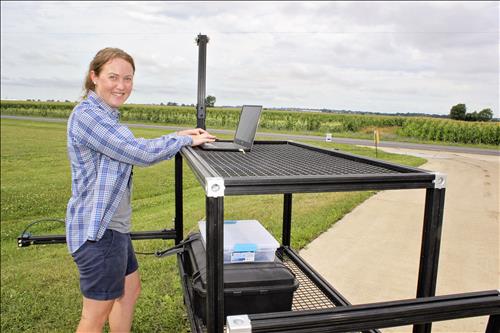U of I crop research moves at light speed with FRED, WILMA
Don’t let the names fool you; FRED and WILMA are anything but Stone Age.
FRED (field roving evaluation device) and partner WILMA (wagon for the investigation of leaves using multispectral analysis), and their respective Ph.D. creators at the University of Illinois, Katherine Meacham and Caitlin Moore, collectively gather much more information much faster than individual scientists clipping light sensors on leaves one at a time.
The by-hand method takes roughly 30 minutes – and only captures information from a single leaf, Moore told FarmWeek during the recent Food and Fuel Field Day.
“This robot is looking to speed up that process,” she said. “We can collect a lot more information a lot quicker and hopefully assess a lot more plants than we can currently.”

In addition to being Flintstones fans, Moore and Meacham are researching technology to measure the light being reflected not only from crop leaves, but also from the whole canopy. Their research is part of RIPE (Realizing Increased Photosynthesis Efficiency) at the U of I.
Scientists can measure solar-induced fluorescence, a plant process that occurs during photosynthesis, from space, but they also need ground “truthing,” Meacham explained. That’s where FRED and WILMA come in. The machines are pushed through the crop rows to collect solar-induced fluorescence measurements.
The robots’ travel is coordinated geographically with earlier recorded passes through research fields. The measurements are tagged according to the plot from which they came and time stamped, Meacham said.
“Different varieties of plants are doing well for different reasons, and these light sensors are able to capture that information,” Moore explained. “We are measuring the light coming in and the light being reflected by the plants in order to get an indication of how well the plants are growing.”
By: Kay Shipman | FarmWeek